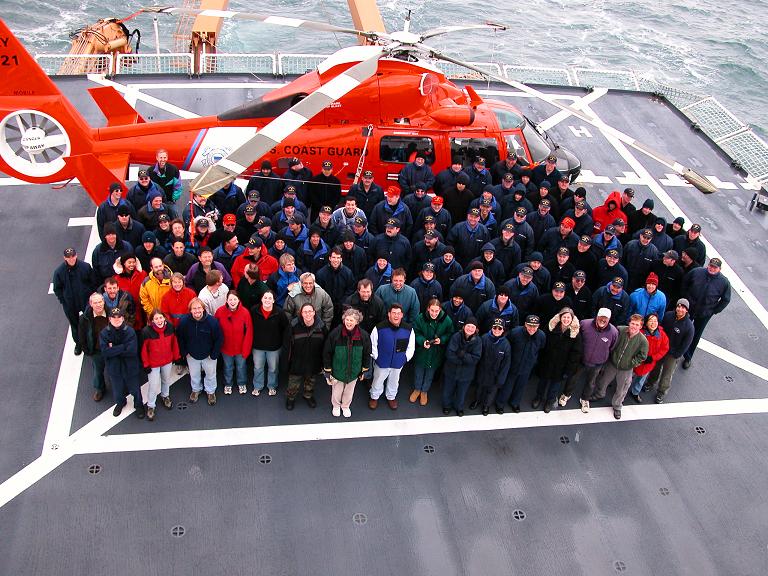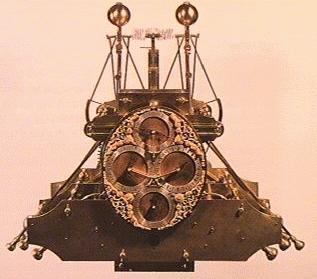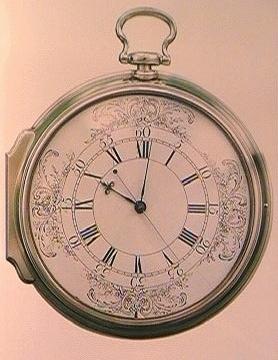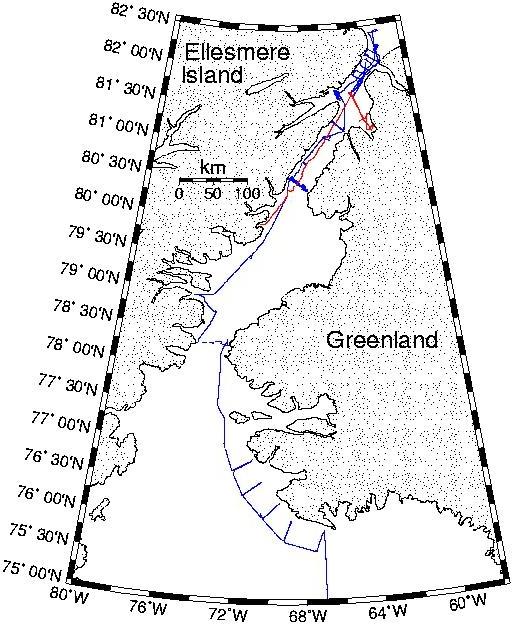|
|
Expedition
Expedition | People
|
Log - August-15-2003
by Robert McCarthy
Previous | Next
“Time passes much too quickly”
“Does anybody really know what time it is?”
“What a long strange trip it’s been”
Robert McCarthy |
 |
Well, this is it---my last log entry from the Healy. And a lot has happened that I am eternally grateful of. The two wonderful side trips (the helo and the Healy 3), the beautiful scenery, and the lovely people I had the pleasure to get to know and spend a month with. Plus, spending time with my old friend Andreas brought me to think about time long past, and the “big-at-the-time” research cruises onboard the RV Cape Henlopen. Time does pass much too quickly! |
| “Does anybody really know what time it is?” Time is all relative to the observer. The twin paradox is a prime example of time being a personal concept relative to the observer who measures it. The story goes, that one of the identical twin brothers goes on a space flight traveling at nearly the speed of light. To his watch on his wrist, time doesn’t appear to change. There are still 60 seconds in a minute, and to his reference frame he can’t tell he’s moving. The other identical twin brother stays home here on earth. His watch too appears to him to behave perfectly. But when the space traveler brother returns home, he doesn’t recognize his twin brother. The traveler hasn’t appeared to age much while his twin is an old man. How can this be? Each watch behaved perfectly. Well, it turns out that time does slow down for an observer traveling at high speeds. This has been proven with atomic clocks that have been identically synchronized before a flight. One goes very high and fast relative to the one left on the ground. Upon return, it was shown that the clock on the ground gained time over the one in the air. Not a lot mind you, but measurable. This helped substantiate Einstein’s theory of Relativity. |
 |
| And speaking of time, these last few weeks (since July 25th) the sun hasn’t set. So there is no external visual clue what time it is. That’s a good thing, since coming back from the Healy 3 at midnight the sun was still out. We had been gone for 6 hours, and it only felt like 2 hours. We were busy, and so much was going on, that time seamed to slow down for us. Had it got dark around 20:00, we would have been externally reminded how late it actually was. |
 |
Since the sun appears to move around the earth in 24 hours and there are 360 degrees in a circle, then there are 15 degrees of longitude for every hour. This corresponds roughly to each time zone. Going across the country, from Delaware to Oregon, you gain 3 hours since you’re traveling in the same direction as the sun appears to move. The other way, you lose 3 hours. Early seafarers needed an accurate measure of time, so they could tell longitude correctly. If you look at very old maps, the landmasses are distorted. Latitude the sailors could get fairly accurately, from looking at stars or by using a sextant in the daytime. John Harrison in 1735 was the first person to make an accurate sea-clock (chronometer) to measure time while at sea (pendulum clocks don’t work due to the ship’s motion). His design had a balance spring with two 5-lb weights connected by brass arcs, see fig 1. This clock was reported to lose on 3 seconds in 24 hours. Later his 4th design, shown in fig 2, only lost 5 seconds in 2 months. Using these accurate sea-clocks, nautical maps became much more accurate. By recording the time on your local watch when the sun was at its highest in the sky, you could determine how many degrees of longitude (east or west) you traveled from home. For example, if you sailed from England west in the Atlantic Ocean, and measured the sun overhead at 14:00 hours, you would know that you had traveled 30 degrees of longitude to the west. If the sun were directly overhead when your clock measured 11:00 hours, you would know that you traveled 15 degrees of longitude to the east. |
| Looking at our ship track, you might think “What a long strange trip it’s been”. Long, yes, but all those turns and meanders were for a reason. A lot was accomplished on this cruise, and the scientists worked extremely well together. For the amount of different interests, (coring, clams, chemistry, moorings, CTD’s, ADCP’s, and bottom mapping,) and the 8 different institutions involved, Dr. Kelly Falkner did an excellent job appeasing everybody. This was no small feat! The weather and ice conditions helped, but she was an outstanding “Principal Investigator”. |
| To thank everyone individually here would be too much, but I enjoyed EVERYBODY’S company. Special thanks to my fellow teacher, Gerhard Behrens, for all of his help. His insights, his log journal, and his good note taking skills, helped my log reports become better. Plus, he’s the exercise guru, who kept me at it when the “rack” seemed like a better idea. Special thanks to Lauren Brown for putting up with me, and placing my stories on the web. She did an excellent job, and she deserves a lot of credit. Special thanks to Dr. Andreas Muenchow for contacting me with this awesome opportunity, and for talking about old-times. We had a lot of fun at the College of Marine Studies together, and his enthusiasm for oceanography has not waned a bit. I enjoy listening to his research ideas. And again, I thank Dr. Kelly Falkner for all the excursions I was on, and for giving me a “ride of a lifetime”. I experienced so much else, from learning about the Inuit people, to learning how to take better pictures, to seeing a coring operation, and to witness divers in the Arctic to name just a few. It’s been a wonderful month. |
 |
| Thank you to the crew of the USCGC Healy, who made this month very enjoyable. The accommodations were excellent, and the food amazing. The Captain runs a smooth ship, and he commands a lot of respect. He’s interested in the science, and goes out of his way to please the research team. Thanks, Captain Oliver! |
| And thanks to my family for supporting this undertaking. Their emails were the highlight to many a day. I anxiously await to be with them again. |
|
